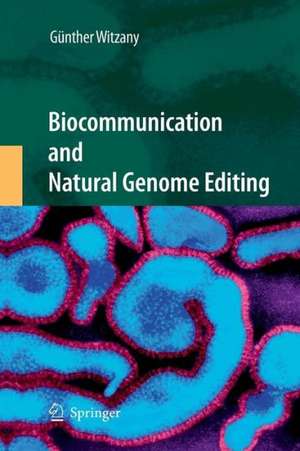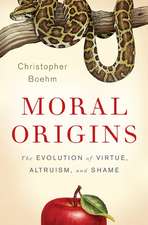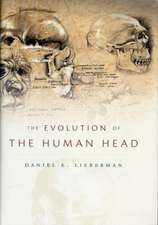Biocommunication and Natural Genome Editing
Autor Günther Witzanyen Limba Engleză Paperback – 16 noi 2014
| Toate formatele și edițiile | Preț | Express |
|---|---|---|
| Paperback (1) | 941.38 lei 6-8 săpt. | |
| SPRINGER NETHERLANDS – 16 noi 2014 | 941.38 lei 6-8 săpt. | |
| Hardback (1) | 947.35 lei 6-8 săpt. | |
| SPRINGER NETHERLANDS – 11 noi 2009 | 947.35 lei 6-8 săpt. |
Preț: 941.38 lei
Preț vechi: 1148.02 lei
-18% Nou
Puncte Express: 1412
Preț estimativ în valută:
180.15€ • 187.02$ • 150.22£
180.15€ • 187.02$ • 150.22£
Carte tipărită la comandă
Livrare economică 25 martie-08 aprilie
Preluare comenzi: 021 569.72.76
Specificații
ISBN-13: 9789400791145
ISBN-10: 9400791143
Pagini: 228
Ilustrații: XIII, 213 p.
Dimensiuni: 155 x 235 x 15 mm
Greutate: 0.33 kg
Ediția:2010
Editura: SPRINGER NETHERLANDS
Colecția Springer
Locul publicării:Dordrecht, Netherlands
ISBN-10: 9400791143
Pagini: 228
Ilustrații: XIII, 213 p.
Dimensiuni: 155 x 235 x 15 mm
Greutate: 0.33 kg
Ediția:2010
Editura: SPRINGER NETHERLANDS
Colecția Springer
Locul publicării:Dordrecht, Netherlands
Public țintă
ResearchCuprins
Introduction: Metaphysical and Postmetaphysical Relationships of Humans with Nature and Life.- Plant Communication.- Communicative Competences of Honey-Bees.- Biocommunication of Corals.- Biocommunication of Fungal Organisms.- Bacteria Communication.- Natural Genome Editing Competences of Viruses and Virus-Like Agents.- How Bacteria Escaped Selection Pressure of the Early RNA-World.- Viral Origins of Telomeres and Telomerases.- Real Life-World of Noncoding RNA-Species.- Outlook.
Recenzii
Frantisek Baluska,
IZMB, University of Bonn, Germany; email: baluska@uni-bonn.de
This provocative and exciting book opens new avenues to understand the nature of diverse living systems and their evolution on the planet Earth. Identification of communication at all levels of biological complexity - from viruses, via bacteria, fungi, plants, corals, and insects, up to humans is convincing. Intriguingly, the communicative nature of all organisms includes also context-dependent interpretations of signs, feature associated only with humans until now. Guenther Witzany reveals that the communicative competence of all organisms is the most inherent feature of the Living Nature, distinguishing it clearly from the Non-Living Nature.
Peter Gogarten,
Dept. of Molecular and Cell Biology, University of Connecticut, Storrs, USA; email: gogarten@uconn.edu
Günther Witzany, an expert in biocommunication, uses linguistics and communication science to provide a novel framework for the discussion of naturally occurring genome editing and for the interactions of selfish genes and molecular parasites with each other and with the host organism. Many interesting questions, for example the interactions between multiple levels of selection, are illuminated through reformulating the problem as a communication process.
Gertrudis Van de Vijver,
Centre for Critical Philosophy, University of Ghent, Belgium; email: Gertrudis.VandeVijver@Ugent.be
At last a systematic and updated account of the living in terms of communicative processes! Of course there is no life without communication, and of course, as Watzlawick already pointed out, it is not possible not to communicate. But someone like Guenther Witzany had to come along to collect, interpret and systematize the relevant data. Not as a distant spectator, however, but as a participant and engaged thinker very well aware of the philosophical and metaphysical changesthat are required to adequately conceive of the living as an essentially communicative process.
Luis P. Villarreal,
Director Center for Virus Research, University of California, Irvine, USA; email: lpvillar@uci.edu
The concept of a code has long been central to biology, especially molecular biology. An entire generation of scientist have been raised to think in terms of a common genetic code. Yet, curiously, the concepts from biocommunication including those of pragmatics and linguistics have seldom impacted code-thinking in the biological sciences. This book represents a much needed symbiosis of these two lines of thinking and will significantly expand our understanding of how codes can be edited or evolved.
IZMB, University of Bonn, Germany; email: baluska@uni-bonn.de
This provocative and exciting book opens new avenues to understand the nature of diverse living systems and their evolution on the planet Earth. Identification of communication at all levels of biological complexity - from viruses, via bacteria, fungi, plants, corals, and insects, up to humans is convincing. Intriguingly, the communicative nature of all organisms includes also context-dependent interpretations of signs, feature associated only with humans until now. Guenther Witzany reveals that the communicative competence of all organisms is the most inherent feature of the Living Nature, distinguishing it clearly from the Non-Living Nature.
Peter Gogarten,
Dept. of Molecular and Cell Biology, University of Connecticut, Storrs, USA; email: gogarten@uconn.edu
Günther Witzany, an expert in biocommunication, uses linguistics and communication science to provide a novel framework for the discussion of naturally occurring genome editing and for the interactions of selfish genes and molecular parasites with each other and with the host organism. Many interesting questions, for example the interactions between multiple levels of selection, are illuminated through reformulating the problem as a communication process.
Gertrudis Van de Vijver,
Centre for Critical Philosophy, University of Ghent, Belgium; email: Gertrudis.VandeVijver@Ugent.be
At last a systematic and updated account of the living in terms of communicative processes! Of course there is no life without communication, and of course, as Watzlawick already pointed out, it is not possible not to communicate. But someone like Guenther Witzany had to come along to collect, interpret and systematize the relevant data. Not as a distant spectator, however, but as a participant and engaged thinker very well aware of the philosophical and metaphysical changesthat are required to adequately conceive of the living as an essentially communicative process.
Luis P. Villarreal,
Director Center for Virus Research, University of California, Irvine, USA; email: lpvillar@uci.edu
The concept of a code has long been central to biology, especially molecular biology. An entire generation of scientist have been raised to think in terms of a common genetic code. Yet, curiously, the concepts from biocommunication including those of pragmatics and linguistics have seldom impacted code-thinking in the biological sciences. This book represents a much needed symbiosis of these two lines of thinking and will significantly expand our understanding of how codes can be edited or evolved.
Textul de pe ultima copertă
This is the first uniform description of all key levels of communication in the organismic kingdoms of plants, fungi, animals and bacteria based on the most recent empirical data. Biocommunication occurs on three levels (A) intraorganismic, i.e. intra- and intercellular, (B) interorganismic, between the same or related species and (C) transorganismic, between organisms which are not related. The biocommunicative approach demonstrates both that cells, tissues, organs and organisms coordinate and organize by communication processes and genetic nucleotide sequence order in cellular and non-cellular genomes is structured language-like, i.e. follow combinatorial (syntactic), context-sensitive (pragmatic) and content-specific (semantic) rules. Without sign-mediated interactions no vital functions within and between organisms can be coordinated. Exactly this feature is absent in non-living matter.
Additionally the biocommunicative approach investigates natural genome editing competences of viruses. Natural genome editing from a biocommunicative perspective is competent agent-driven generation and integration of meaningful nucleotide sequences into pre-existing genomic content arrangements and the ability to (re)combine and (re)regulate them according to context-dependent (i.e. adaptational) purposes of the host organism. The biocommunicative approach is an original scientific field of investigations. Readers must be competent in basic knowledge of biology and genetics.
Additionally the biocommunicative approach investigates natural genome editing competences of viruses. Natural genome editing from a biocommunicative perspective is competent agent-driven generation and integration of meaningful nucleotide sequences into pre-existing genomic content arrangements and the ability to (re)combine and (re)regulate them according to context-dependent (i.e. adaptational) purposes of the host organism. The biocommunicative approach is an original scientific field of investigations. Readers must be competent in basic knowledge of biology and genetics.
Caracteristici
First uniform description of all key levels of communication in the organismic kingdoms of plants, fungi, animals (bees and corals), bacteria and additionally the natural genome editing competences of viruses based on the most recent empirical data The biocommunicative approach presented is based on the results of the philosophy of science discourse concerning coherent definitions of 'language' and 'communication'














